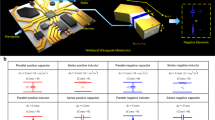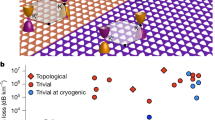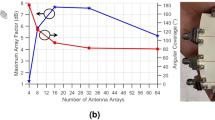Abstract
WE are interested in the measurements which Khastgir, Chandhuri and Sen Gupta described in a recent letter to NATURE1, apparently confirming the occurrence of negative attenuation of wireless waves first noticed by Ratcliffe and Barnett2. Some years ago, we attempted to extend the measurements which Ratcliffe and Barnett had made on the 1,600-metre transmissions from the Daventry Station of the B.B.C., so as to include measurements on the same wave-length but with a shorter transmitting aerial3. The results of these further measurements led us to question the interpretation of Ratcliffe and Barnett's results. We began by using measuring apparatus similar to that used in the original investigation, and consisting of a tuned loop circuit with a Moullin voltmeter placed directly across the tuning condenser. With this apparatus we reproduced the curve of Ratcliffe and Barnett quite closely. We then had occasion to make measurements with an apparatus in which the signal produced a deflection in a galvanometer attached to the output of an amplifier, this deflection being matched by injecting a calibrated E.M.F. into the loop circuit. This method of measurement showed no sign of the negative attenuation effect. Closer investigation of the disagreement led us to the conclusion that the measurements made by the Moullin voltmeter method were vitiated by the fact that, owing to the flow of grid current, the damping which the voltmeter produced in the loop circuit was a function of the signal amplitude. The increased damping for the larger signals caused the signal strength to be progressively underestimated as the apparatus approached nearer to the emitter, and gave the appearance of negative attenuation.
This is a preview of subscription content, access via your institution
Access options
Subscribe to this journal
Receive 51 print issues and online access
$199.00 per year
only $3.90 per issue
Buy this article
- Purchase on SpringerLink
- Instant access to full article PDF
Prices may be subject to local taxes which are calculated during checkout
Similar content being viewed by others
References
Nature, 136, 605 ; oct. 12, 1935.
Proc. Camb. Phil. Soc., 23, 288 ; 1926.
Nature, 125, 926 ; 1930.
Nature, 124, 617 ; 1929.
J.E.E.E, 70, 543 ; 1932.
Author information
Authors and Affiliations
Rights and permissions
About this article
Cite this article
RATCLIFFE, J., WHITE, F. Negative Attenuation of Wireless Waves. Nature 136, 794 (1935). https://doi.org/10.1038/136794a0
Issue date:
DOI: https://doi.org/10.1038/136794a0



